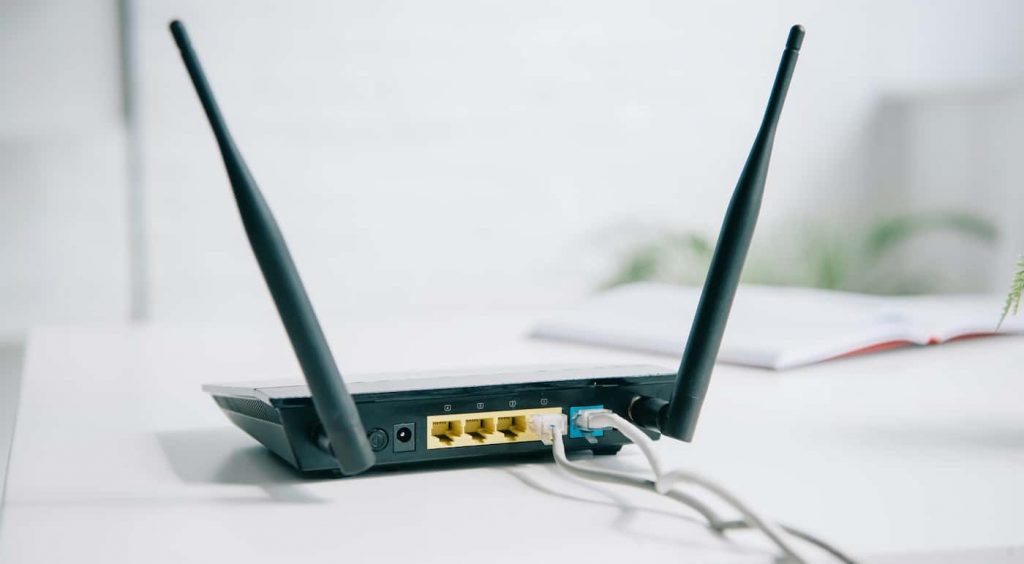You can establish a wireless link between two routers. You can bridge two networks with differing infrastructures by connecting a wireless network to a wired network. But how to bridge a router, exactly?
For that matter, we have created this article with a simple guide on how to do it. Thus, without any further ado, let’s discover!

How to Bridge a Router
You must access the configuration page of your secondary router and log in before you may bridge a router. Then proceed as follows:
Advanced > Advanced Setup > Wireless Bridge > Check the Enable Bridge Mode box > Setup Bridge Mode Wireless Settings
Yes, the procedure may seem a little tricky at first, but once you see how fast and reliable the internet is, you won’t regret it. Therefore, let’s go step by step.
Read more: What Is AP Mode on a Router?
Step-By-Step Guide
There are some pre-requirements that you need to consider, such as:
- High-speed internet access and a pair of wireless routers;
- One serves as the access point by connecting to your broadband internet connection;
- One connected to other machines (s) that required a web connection. This one must be DD-WRT compatible.
Moreover, what you should know before you start with the process is:
- The IP Address;
- The Default SSID;
- The Security Mode;
- The Security Key (Wi-Fi password);
- The Radio Frequency Band.
Step 1
First, you will need two routers, one of which will serve as your primary device and the other as your secondary device. Confirm that the secondary router supports “Bridge mode” or “Network Bridge mode”. You can’t use it for this if it doesn’t allow a bridge mode. Instead, consider swapping your primary and secondary routers.
Then, use an Ethernet cable to link your PC to the main router. Once connected, enter the public IP address, sometimes referred to as the static IP address, into a web browser’s address bar to access the admin panel.
Step 2
In the Settings menu of the primary router, enable DHCP. For further reference, note important information, including the Wireless band, Channel number, SSID, IP address, and Password. Save your modifications, then unplug the router from your computer.
Moreover, connect your computer to the backup router using the same Ethernet cable. Once connected, enter the public IP address into a web browser’s address bar to access the admin panel.
Also, to access the router’s graphical user interface, enter your IP address and click “Go” (or the EWS screen).

Step 3
In the next step, certain routers require authentication. If that occurs to you, don’t panic; input the username and password for the router and log in. The username and password should remain “Admin” and “password”.
Then, select “Advanced Setup” from the “Advanced Settings” menu under “Settings.” There is a selection for “Wireless Bridge” here. After selecting the checkbox next to “Enable Bridge Mode,” select “Setup Bridge Wireless Settings” from the menu. Click “Apply” after entering the settings for your primary router here.
Step 4
The next step is to choose the Wi-Fi network’s radio frequency. Always configure it to 5GHz when using 802.11ac. On the following screen, input the information about your current router that was previously described. The proper Wi-Fi SSID, the security mode, and the key are all included.
Then, comply with all instructions, and when the Advanced Wireless Settings box appears, click “Apply” to complete the process.
Step 5
Turn down the router’s firewall and access controls if you want to use it as a bridge. The primary router will take these actions.
Then, delete every entry from the router’s “Port Forwarding” section. These options are no longer required; they were created to make it simpler for some apps to connect to the Internet via particular ports.
Next, save all the settings you’ve modified and restart the router to apply them. The router can now function as a bridge like all its routing features have been turned off. You’re done now!
Read more: Which WiFi Standard Am I Using?
Useful Things to Know
You may let the signal spread across your home by converting an existing router into a Wi-Fi extender, which should address any coverage issues. It’s simple to convert an outdated router into an extension so that it may take advantage of a strong Wi-Fi signal and broadcast a new stream of data.
However, like a wireless repeater, the wireless bridge offers Ethernet rather than sharing the Wi-Fi connection. Connect devices to your current Wi-Fi network to the old router’s Ethernet ports.
Moreover, it’s vital to remember that bridging connections doesn’t boost speed; instead, it lessens the demand on the bandwidth, creating a clearer and more dependable connection. One network is created by bridging connections.
The range of the wireless bridge
Since wireless bridges depend on wireless signals, determining their range is crucial. Typically, most wireless bridges provide a range rating of 2 miles, 3 miles, and occasionally even 5 miles for maximum adaptability.
So, you can utilize bridge mode to increase the Wi-Fi’s range. The bridge mode speeds up your internet connection while enabling the router to serve a larger region.
Read more: How to Ping a Router
Conclusion
This is the very end of this short article. We hope you find this article helpful; now it is clearer how to bridge a router all by yourself.
As you now know, there are many advantages to bridging a router, with faster internet speed being the most significant; implementing the procedure only takes a few minutes of your time. Once you’ve followed the instructions, connecting your router won’t be an issue.
As we’ve already mentioned, a network bridge can link wired devices to a wireless network. The advantages are clear: you won’t need to run miles of cable to connect distant wired devices to your router. Wired devices can communicate wirelessly with your router and every other device on your network when connected to a bridge.
Best of luck!